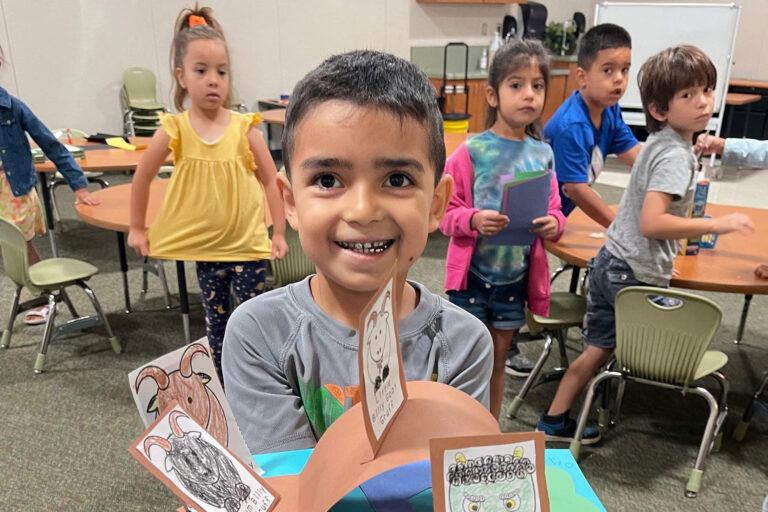
Lindsay Unified, a rural district in the Central Valley, serves about 4,000 students. Ninety percent are Latino, 33% are immigrants, 53% enter school as English Learners, and 13% are homeless; nearly all qualify for free and reduced-price meals. Since the district launched its Strategic Design—a student-centered learning framework—in 2007, student outcomes have improved dramatically. High school graduation rates rose from 67% to over 90% in 2019–20; four-year college matriculation rose from 21% to 56% as of 2017–18; and proficiency rates in English language arts and math are close to the statewide average—and above the statewide average for low-income students. We talked with Lindsay superintendent Tom Rooney about the district’s ongoing transformation.
What are the key factors in the success of Lindsay’s Strategic Design?
A key element was that, before we engaged the community, we engaged the district leadership. We spent about eight months studying the future, and our leaders recognized the need for a transformation. Then we worked with our classified employees union, our teachers’ union, our administration, our city council, and business owners to create a community-wide vision.
Early on, a small group of leaders embraced the responsibility to keep district efforts going. Several of us formed a committee that has been meeting every week since 2007, through many changes in membership. It focuses on things like implementing curriculum and personnel changes, deploying technology, designing assessments, and defining lifelong learning standards.
Another lesson learned: Enroll people to be the voice of the community. We spent some time with every employee. We want everyone, from district leaders to classified staff (such as custodians and bus drivers), to have an “elevator speech”—to be able to articulate in two minutes or less what we do here and what their role is.
In 2016, we launched our community Wi-Fi network and shifted some of our curriculum online. We view technology as an effective accelerator, but it’s not just putting kids on computers. The core foundational element of Lindsay’s model is that people learn in different ways and at different rates; another key element is that learners need to be empowered to take ownership of their learning.
There have been many pain points, but our investment in Lindsay’s learners has helped us recover from each setback. We will never actually be where we need to be, because as a future-focused organization, we have to keep making adjustments, and changing course when something does not work.
How is the district helping students recover from the pandemic’s impact on learning and mental health?
We’ve been monitoring learner social/emotional health, because you can’t really address learning gaps effectively until you deal with social/emotional problems. We have interventions, and effective programs to get kids accelerated in their learning. But the social/emotional element is paramount.
We did a survey in fall 2021 that gave us some baseline data about social/emotional wellbeing: 65% of the staff indicated that they were just surviving day to day; for learners, it was tragic to say that 20% or so felt total hopelessness, and 8% contemplated suicide at some point. Those numbers were a wake-up call.
We went to work on building belonging and rebuilding our community. That’s a unique thing about our system—a culture of connectedness. The spring 2022 surveys were almost the exact opposite: a lot more staff were thriving, and nearly all learners felt connected.
When I did interviews with learners in fall 2021, the common theme was “Please, don’t ever close the schools again.” We sometimes forget what our students face when schools are closed. We connected with them on Zoom, provided three meals a day, and did tons of outreach. But we don’t know what life is really like at home. Because children in impoverished situations depend on schools to provide many services, it will take several years for us to recover.
Taking care of the adults is just as important. If the adults don’t feel cared for, listened to, respected, it’s difficult for them to come back and do their very best. We hired a social/emotional specialist who serves all of our communities and we continue to monitor staff wellness.
Tell us about Lindsay USD’s efforts to improve teacher recruitment and retention—longstanding challenges that were worsened by the pandemic.
Many of the teaching staff and leaders in Lindsay did not grow up in the community. Our 67% graduation rate back in the 2000s meant that few learners were going to college. My dream is to give Lindsay USD back to the children of Lindsay.
We created a pipeline to recruit classified staff as well as students and send them to college on a forgivable loan—if you come back to teach in Lindsay for five years, it’s all forgiven. Over 120 people have gone through the pipeline. Some decided they didn’t want to teach, but somewhere around 32 of the last 35 hires are Lindsay children.
This past year we built a residency model. We place a college graduate in our residency program to work side by side with a master Lindsay learning facilitator for one year while they get their master’s degree. The commitment is that you teach in Lindsay or at a low-income school in our region. We hired 12 of this year’s 15 residents to begin teaching in our elementary and secondary schools this fall.
What advice would you give to other districts?
It is important to note that this journey of transformation comes with many failures and a lot of growing pains. We actually don’t think anybody should just replicate Lindsay’s model. Each community should do the model that is in alignment with what they want for their children. There has to be local context that is applied. Yes, learn lessons, but don’t think that you can just apply our framework and it’s all going to work out.